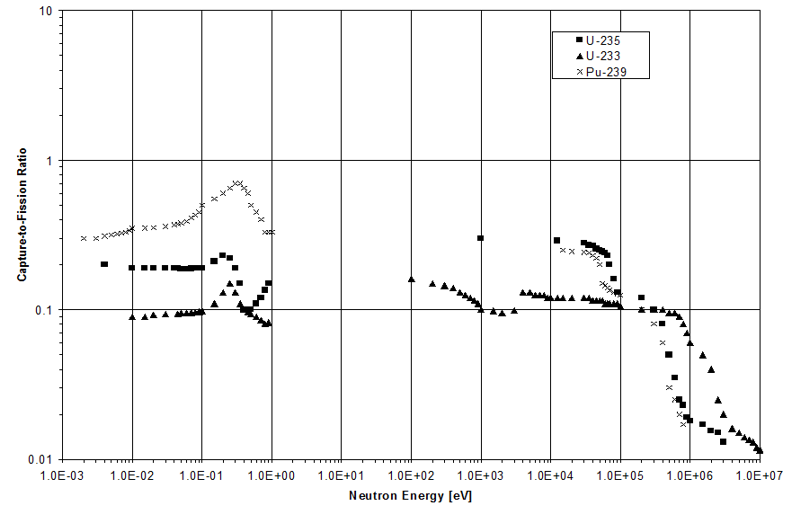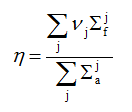NEUTRON FLUX
The neutron flux, f , may be defined as the total number of neutrons that passes through a unit area normal to their direction per second. In the event all neutrons have the same speed v and have a neutron density of n neutrons per unit volume, then the flux can be defined as (Lamarsh & Baratta, equation 3.20):


The units of neutron flux are neutrons/cm 2 - sec (same units as the beam intensity). The interaction rate per unit volume (or the collision density) can be described in terms of the flux as (Lamarsh & Baratta, p. 61):


CAPTURE-TO-FISSION RATIO
When a neutron is absorbed by a fissile isotope such as 235U, it may cause that isotope to fission. It is also possible that the compound nucleus formed by the neutron absorption, 236U*, may instead decay to its ground state by gamma emission. This relative balance between the probability of fission and radiative capture is referred to as capture-to-fission ratio and is defined by (Lamarsh & Baratta, equation 3.45):

This ratio depends on the isotope of interest and the incident neutron energy E. The capture-to-fission ratio is plotted in the figure below (adapted from Duderstadt & Hamilton 1976, Figure 2-19) as a function of neutron energy for three of the primary fissile nuclides. It can be seen from the figure that most neutron absorption in these isotopes leads to fission events.

NUMBER OF FISSION NEUTRONS PER NEUTRON ABSORBED IN FUEL
Let's begin with a definition:
η = expected (or average) number of neutrons produced per neutron absorbed in fuel (i.e., a fissile nucleus)
For a fuel composed of a single fissile isotope , we can write:
η = 
 σf / σa =
σf / σa = 
 /(1+ α)
/(1+ α)
where 

Select the correct order of terms:
Most fuels, however, contain a mixture of isotopes. In this case, the macroscopic fission and absorption cross sections will be utilized the following way to characterize each isotope:

Note that h (E) is generally of the order of 2 for low-energy neutrons, but increases with energy above 0.1 MeV as the capture-to-fission ratio falls off (see previous figure illustrating the capture-to-fission ratio as a function of neutron energy).
Continue to Part V
After finishing this lesson, complete the form below:


